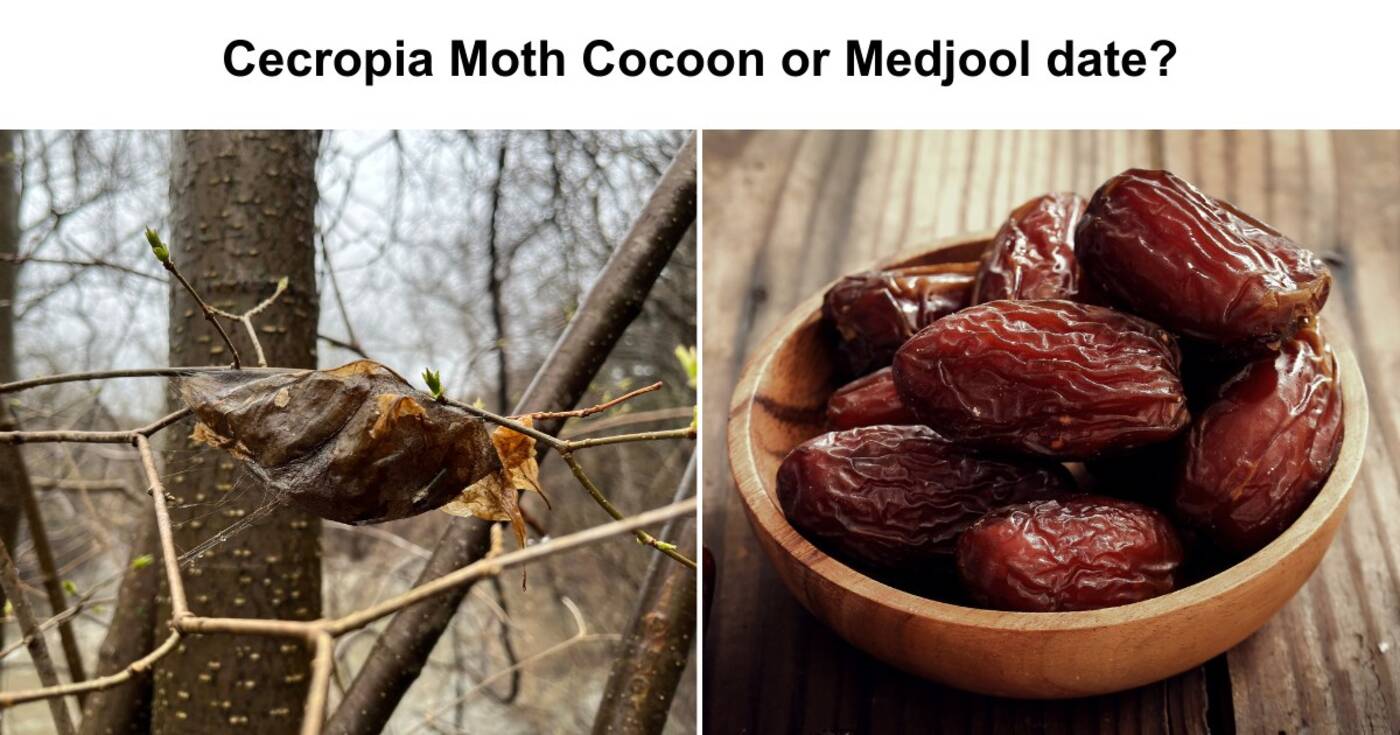
City of Toronto is asking you not to confuse these 15 cm bug cocoons with food
While they might look like a forbidden sweet treat at first glance, the City of Toronto is warning that these cocoons — which somewhat resemble Medjool dates — are not for eating but for admiring, as they house one of the largest moths native to North America.
In a post shared on Facebook this Thursday, Toronto's Urban Forestry account uploaded a picture of a cecropia moth cocoon, an insect found throughout the majority of Canadian provinces.

The City's Urban Forestry page joked that the cocoons shouldn't be confused for the sweet treat.
"While this could be mistaken for a Medjool date, it's actually the cocoon of the native Cecropia Moth (Hyalophora cecropia). They belong to the family of giant silk moths (Saturniidae) and are some of the largest moths native to North America," the City wrote.
Throughout the summer, after hatching, caterpillars feed on the leaves of their host plants, which include oaks, cherries, and maple. By late summer, the caterpillars are large, growing up to 10 centimetres long — about the same size as a deck of cards.
Their bodies are bright green with blue, yellow, and orange balls called protuberances or tubercles, with black spines. Caterpillars then spin a tough, brown silk cocoon on a twig, which resembles dried leaves for camouflage, and stay encased for roughly 10 months.
From spring to early summer, the colourful silk moths emerge from their cocoons with wingspans anywhere from 9.5 to 15 centimetres.
Although many moth species are crucial pollinators that feed on the nectar of plants, adult cecropia months don't actually have functional mouth parts and digestive systems, and often only live for two weeks after emerging from their cocoon, with the sole purpose of finding a mate.
Ryan Hodnett/Wikimedia Commons and Subbotina Anna/Shutterstock
Latest Videos
Latest Videos
Join the conversation Load comments







